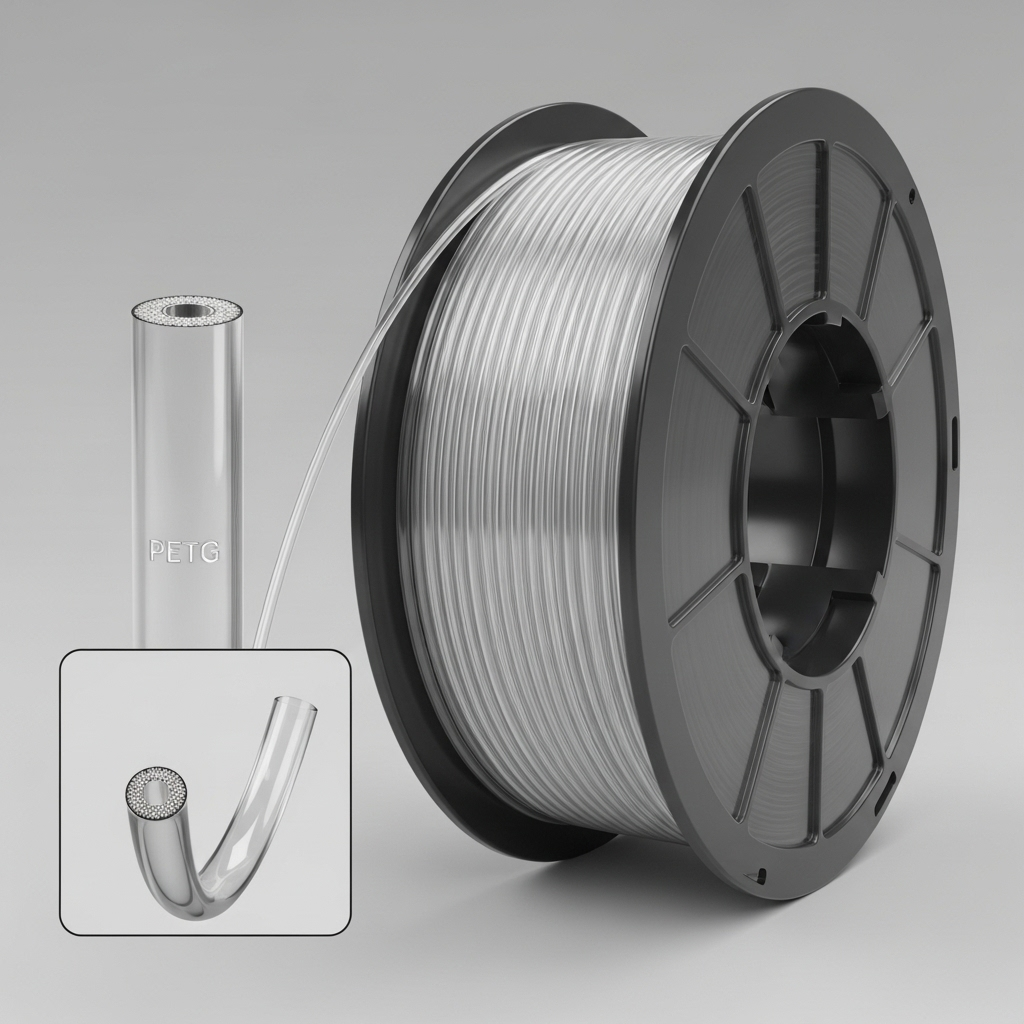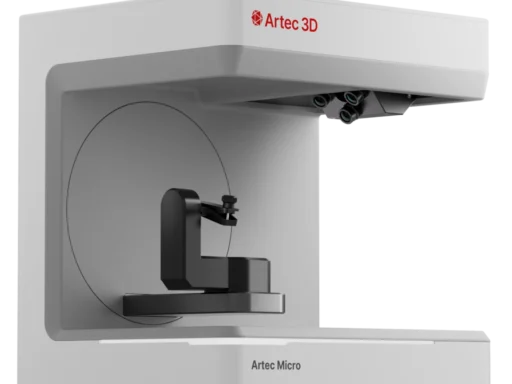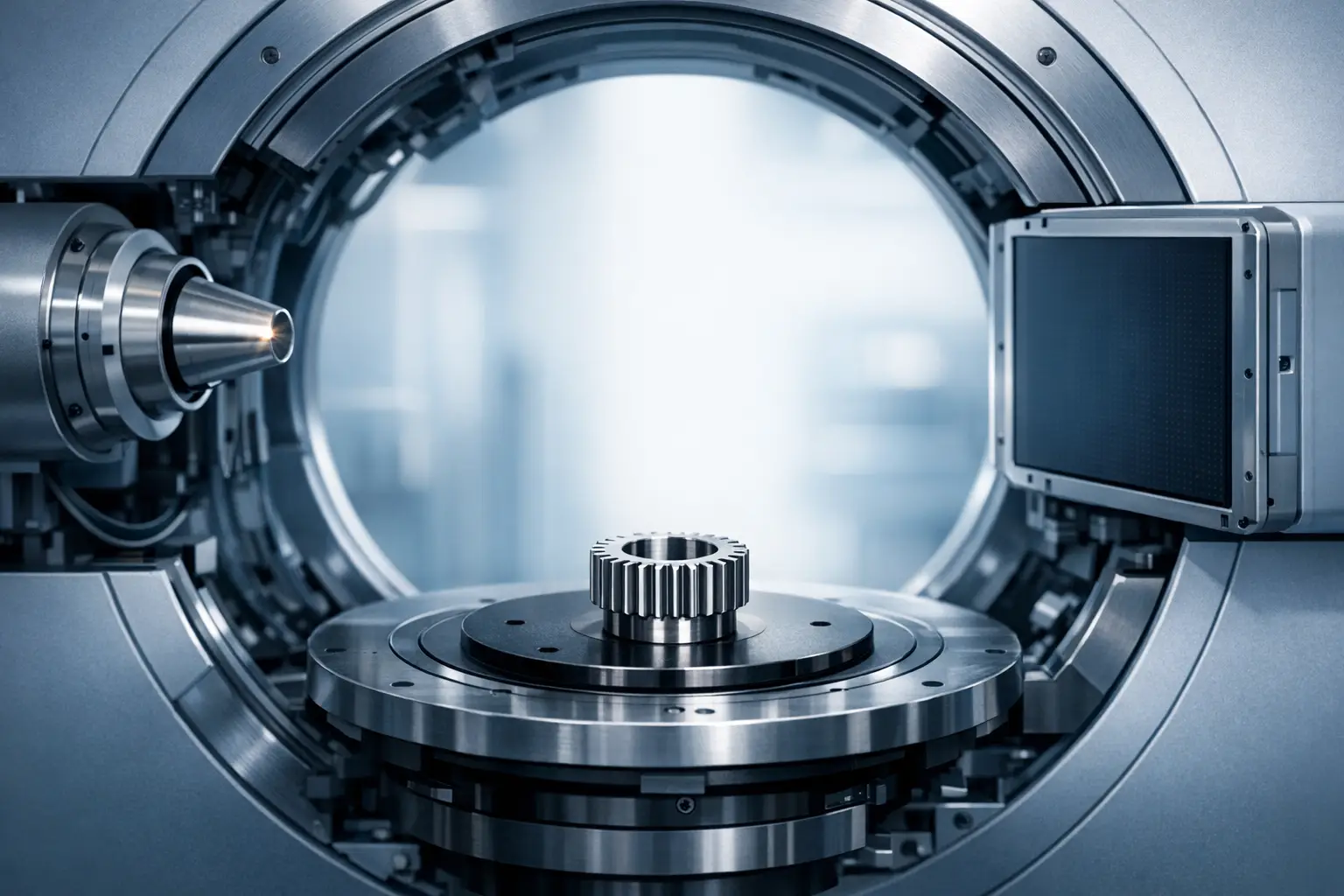Summary
Polyethylene Terephthalate Glycol (PETG) filament is a popular thermoplastic used in 3D printing, blending the ease of printing of PLA with enhanced durability and temperature resistance seen in ABS. Originating from PET, patented in 1941, PETG is characterized by a density of around 1.3 g/cm³, an ultimate tensile strength of 53 MPa, and a glass transition temperature (Tg) near 81 °C (divbyz.com). PETG filament is valued for its robust balance of toughness, printability, and chemical resistance, outperforming PLA in strength and flexibility while avoiding some challenges associated with ABS.

Historical Background
Polyethylene Terephthalate (PET) was first patented in 1941 by Whinfield and Dickson at the Calico Printers’ Association in Manchester, England (en.wikipedia.org). PETG emerged in the 3D-printing sector between 2014 and 2015, propelled by early releases from ColorFabb and Eastman (compounddynamics.com).
Technical Principles
PETG is derived from PET by glycol modification—an approach that disrupts the semi-crystalline structure of the parent polymer. This yields an amorphous, optically clear material with greater flexibility and reduced brittleness—properties particularly advantageous for filament extrusion (en.wikipedia.org).
The introduction of glycol disrupts PET’s crystallinity, lowering internal stresses and improving its layer adhesion during printing. This results in PETG’s characteristic glass transition temperature of 81–85 °C, notably higher than PLA yet below ABS. The reduced shrinkage and diminished warping, combined with strong interlayer bonding, make PETG especially suited for accurate, large-format prints, minimizing print failures associated with thermal stresses (divbyz.com).
Types
There are two principal versions of PETG filament: standard PETG and carbon-fiber reinforced PETG (PETG‑CF). While standard PETG provides a balance of flexibility and strength, PETG‑CF incorporates carbon fibers for heightened stiffness, dimensional stability, and increased wear resistance in demanding applications (compounddynamics.com).
Performance
Raw PETG exhibits key material characteristics relevant for 3D printing. Its density is typically around 1.3 g/cm³, with an ultimate tensile strength (UTS) of 53 MPa. The glass transition temperature, a crucial indicator of heat resistance, is reported at 81 °C (divbyz.com).
Performance in 3D-printed objects can differ notably based on print orientation and manufacturer. Tensile strength for 3D-printed PETG is observed as 31.7 MPa in the X‑Y plane and 29.4 MPa in Z, with elongation at break measured at 4.43% and 3.10% respectively (dbe.unibas.ch). Independent manufacturer data suggest an ultimate tensile strength of 45.8 MPa and an elongation at break of 18% (fictiv.com). Comparative analyses highlight PETG’s superiority over PLA, with PETG showing tensile strengths from 50 MPa (vs PLA’s 32 MPa), and elongation at break values much higher (PETG 21%, PLA 4%) (3dinsider.com). Flexural strength and impact resistance are also typically greater in PETG.
Performance comparison between PLA and PETG:
| Property | PETG | PLA | Reference |
|---|---|---|---|
| Density (g/cm³) | 1.29–1.4 | 1.24 | immould.com |
| Tensile Strength (MPa) | 50–75 | 40–60 | immould.com |
| Elongation at Break (%) | 21 | 4 | 3dinsider.com |
| Impact Strength (kJ/m²) | 5–7 | 2–3 | immould.com |
| Glass Transition Temp. (°C) | 81–85 | 52–60 | divbyz.com, immould.com |
Notable PETG properties:
- Superior ductility and strength versus PLA.
- Enhanced chemical resistance compared to PLA and ABS.
- Minimal warping and strong interlayer adhesion during 3D printing.
- Stable mechanical properties across a wider temperature range.

Applications
PETG filament is widely chosen for producing both functional prototypes and durable, end-use components. Its high impact resistance and chemical tolerance make it suitable for tooling, machine guards, medical device enclosures, and mechanical parts exposed to moderate loads (vexmatech.com). Because PETG yields minimal odor and exhibits excellent clarity, it is also used for food-safe packaging and transparent mechanical covers—though regulatory compliance varies by supplier. Its strong filament nature and weatherability enable outdoor applications, such as electrical component housings, signage, and greenhouse elements. Furthermore, 3D printing PETG is preferred for industrial designs demanding mechanical stability, resistance to UV radiation, and tolerance to cleaning agents.
Key PETG application segments:
- Production of strong, functional prototypes.
- Enclosures for electronics and electrical components.
- Outdoor equipment and signage.
- Food-safe and medical packaging (where certified).
- High-durability machine and tool parts.
Research Updates
Recent studies have focused on optimizing PETG’s mechanical performance, such as layer bonding and surface treatment for self-cleaning or antibacterial properties. While Polymaker and academic journals (e.g., PLOS One 2022; Polymers 2022) report promising improvements, detailed, reproducible numeric data remain pending (en.wikipedia.org). Ongoing trends include the development of enhanced PETG blends for specialized industrial and technical functions.

Q&A (FAQ)
What makes PETG filament stronger than PLA?
PETG filament achieves higher strength due to its molecular flexibility and enhanced interlayer adhesion. Its typical tensile strength is about 50–75 MPa, compared to PLA’s 40–60 MPa, and elongation at break is much greater at 21% versus 4% (immould.com; 3dinsider.com). This makes PETG less brittle and more resilient.
What is the typical glass transition temperature of PETG filament?
The glass transition temperature of PETG filament is between 81 and 85 °C, significantly higher than that of PLA, which ranges from 52 to 60 °C (divbyz.com; immould.com). This provides better heat resistance in finished parts.
How do tensile strength and elongation of PETG compare to PLA in 3D‑printed parts?
3D-printed PETG parts typically exhibit tensile strengths around 31.7 MPa (X‑Y) and elongation at break up to 18–21%, greatly surpassing PLA’s typical 32 MPa and 4% elongation. This results in a tougher, less brittle print (3dinsider.com; dbe.unibas.ch).
What are the benefits of carbon‑fiber PETG (PETG‑CF)?
Carbon-fiber reinforced PETG (PETG‑CF) offers superior stiffness and dimensional control when compared to standard PETG. Its added wear resistance and strength make it ideal for producing load-bearing or high-precision elements, benefiting industries needing lightweight yet robust components (compounddynamics.com).
Does PETG filament offer chemical and UV resistance for outdoor applications?
Yes, PETG filament is known for its strong chemical resistance and reasonable UV durability, supporting its use in outdoor equipment and signage. It outperforms PLA in these categories, providing better performance in demanding or harsh environments (vexmatech.com).
Is PETG filament food‑safe and recyclable?
PETG is intrinsically food-safe and recyclable, sharing the PET family’s compatibility with food contact applications. Regulatory approval, however, depends on sourcing and any colorants or additives used, so certification should always be confirmed with the specific manufacturer (en.wikipedia.org).





